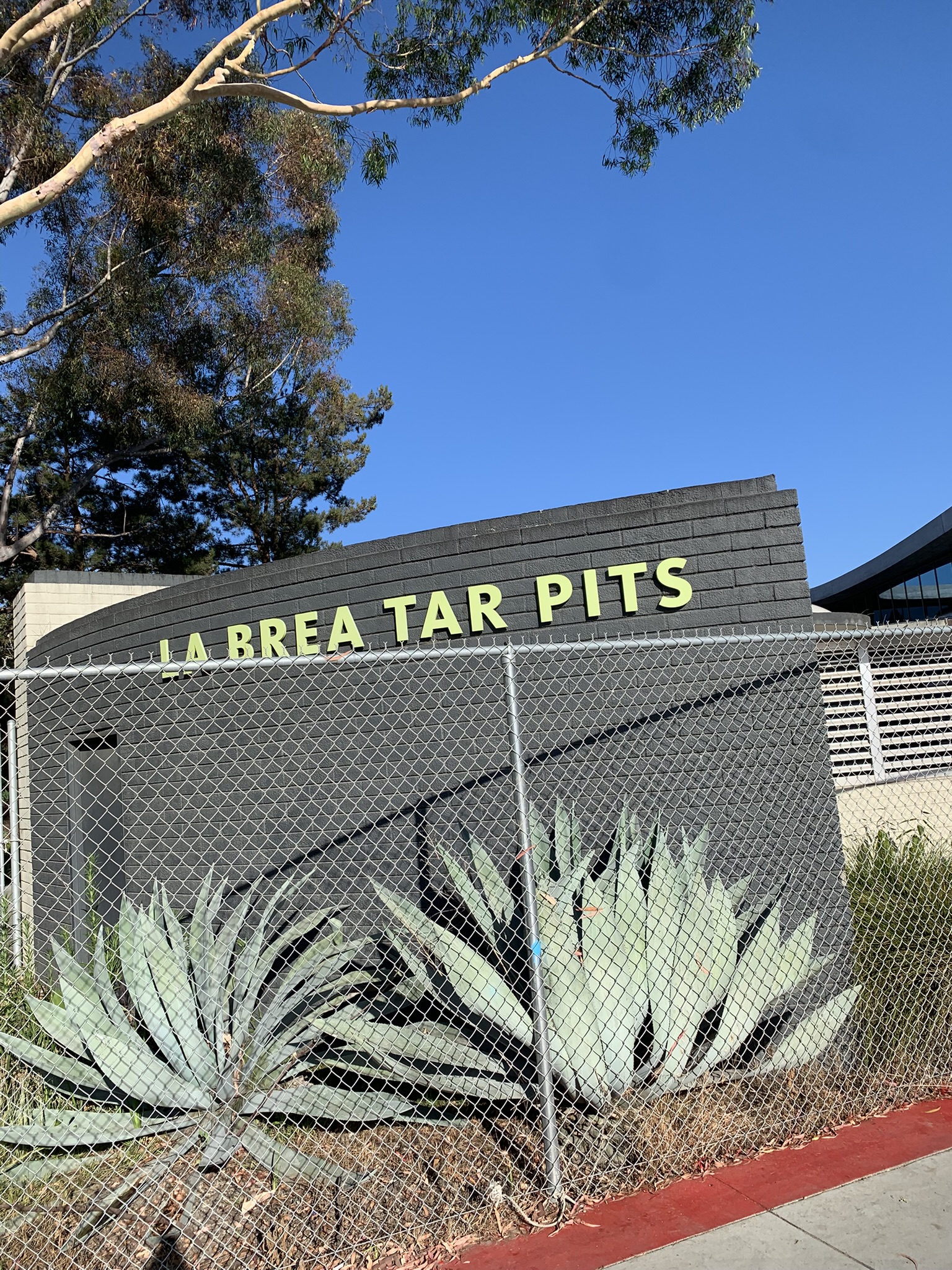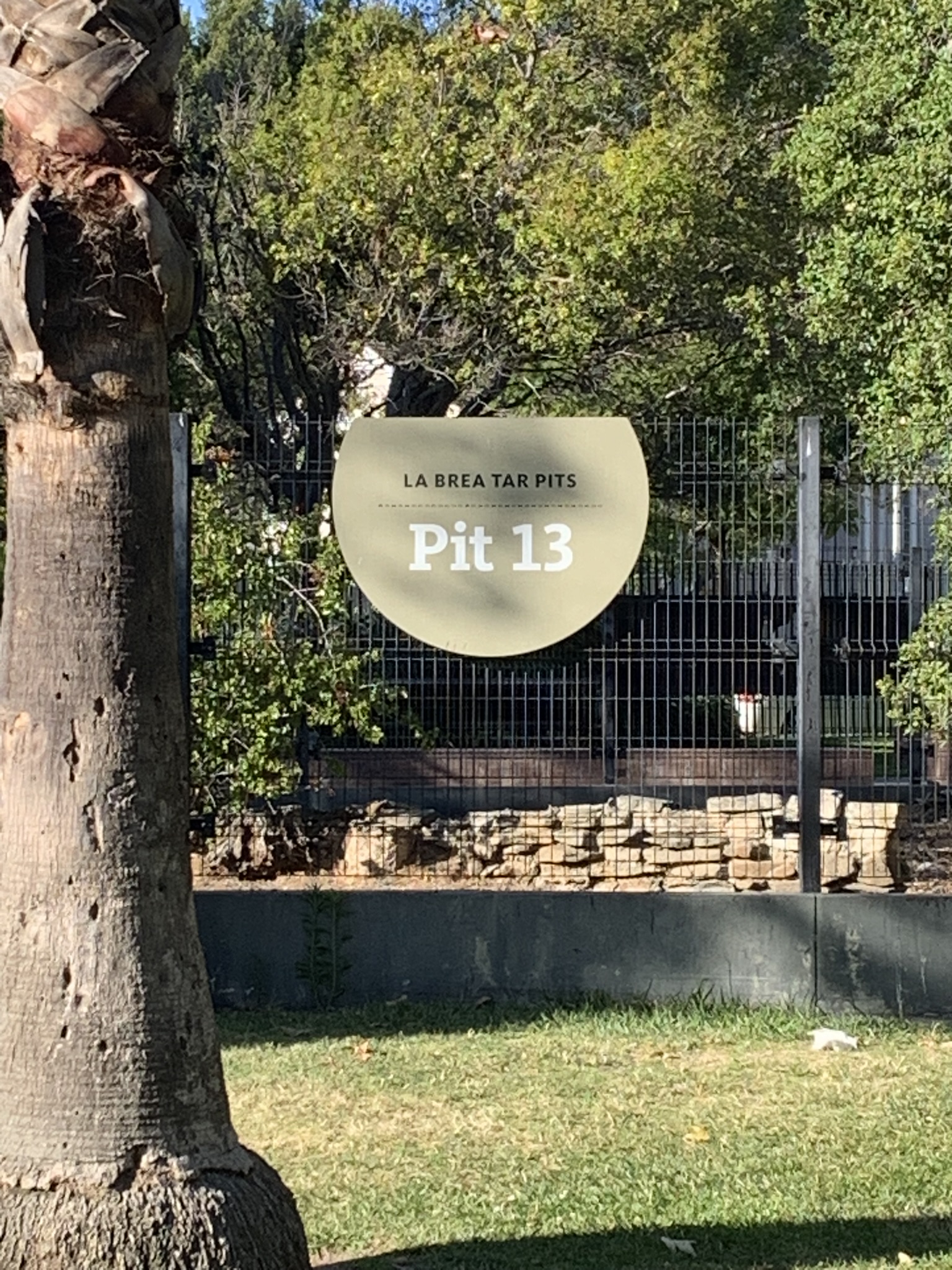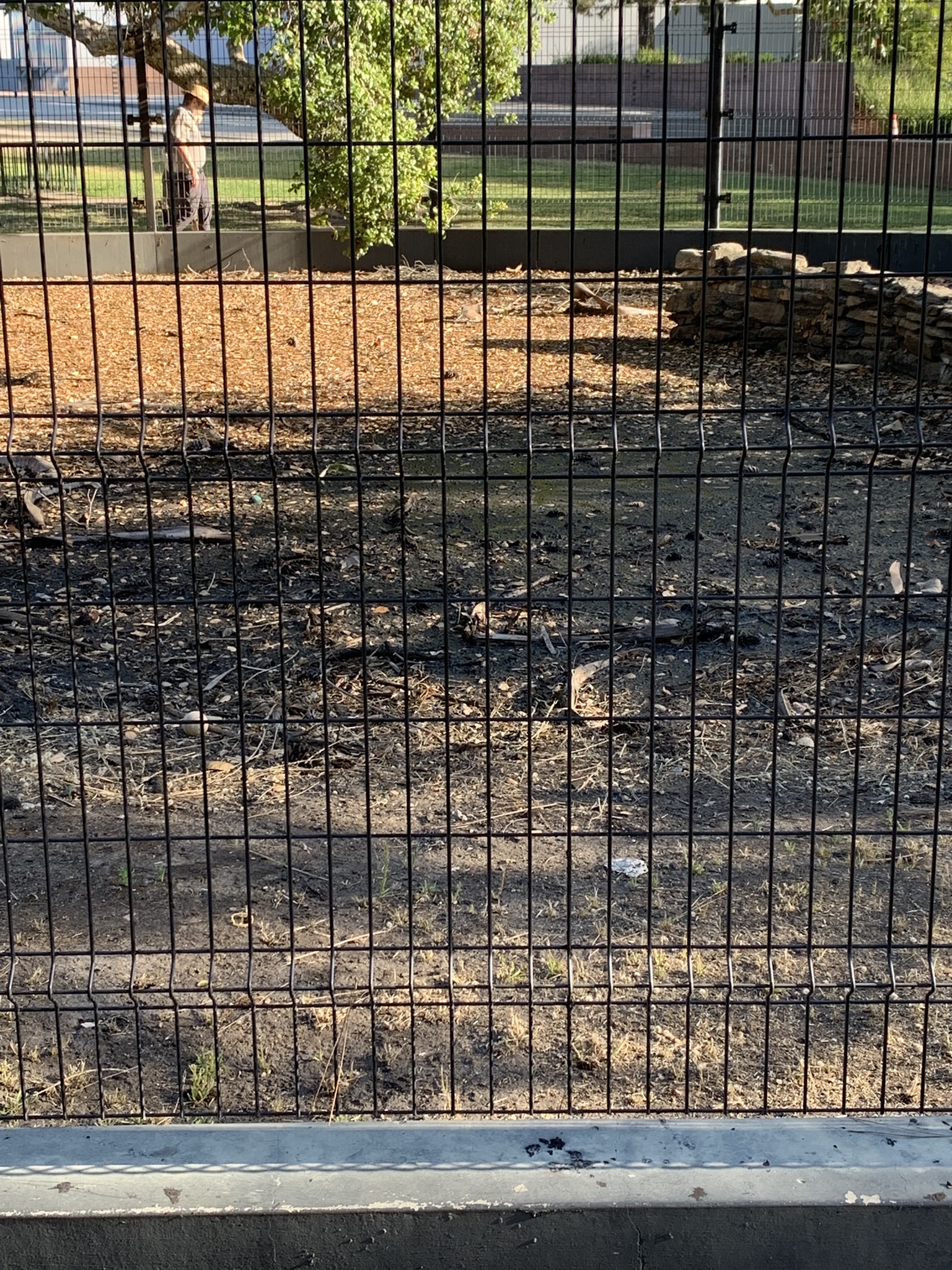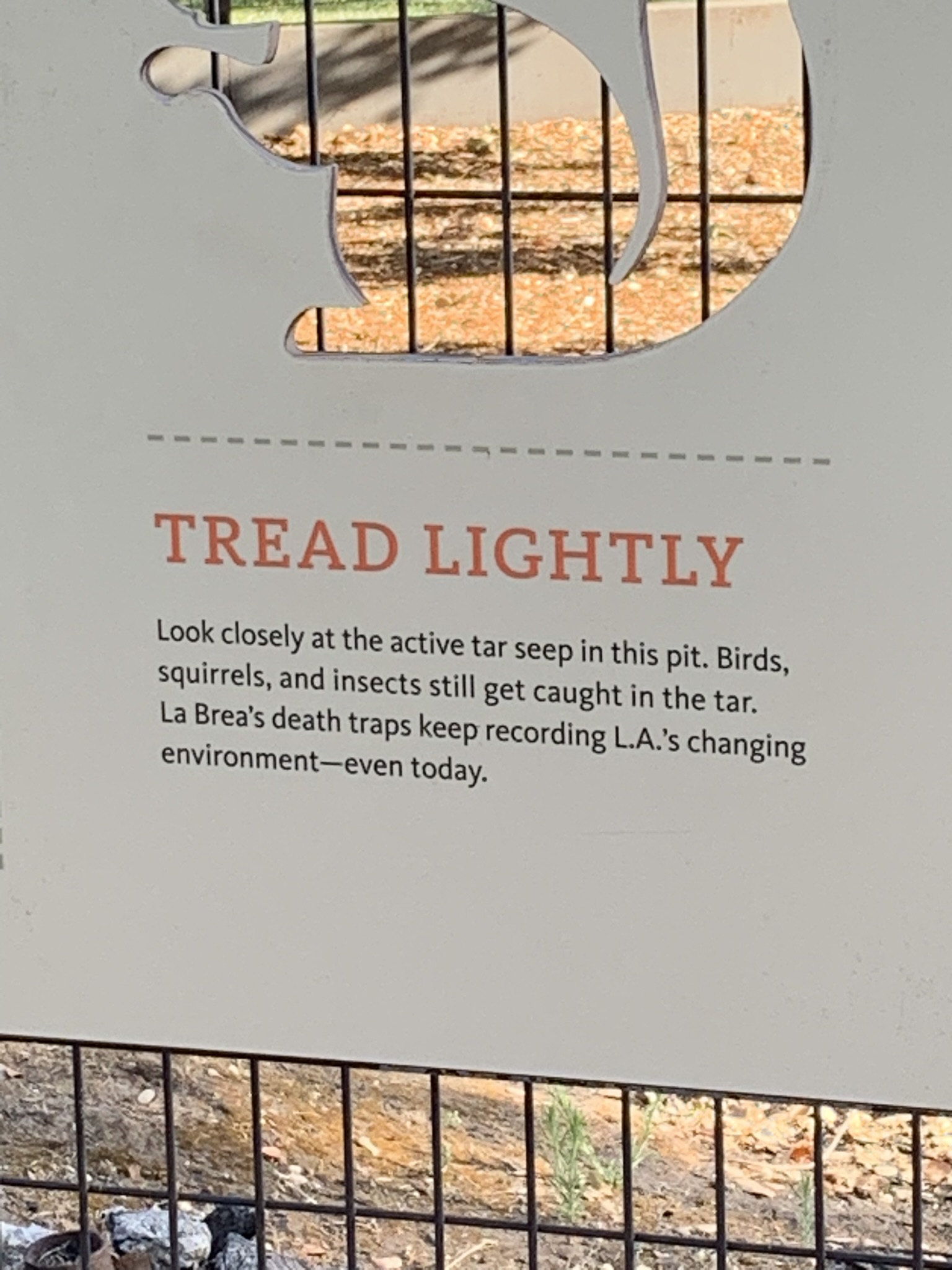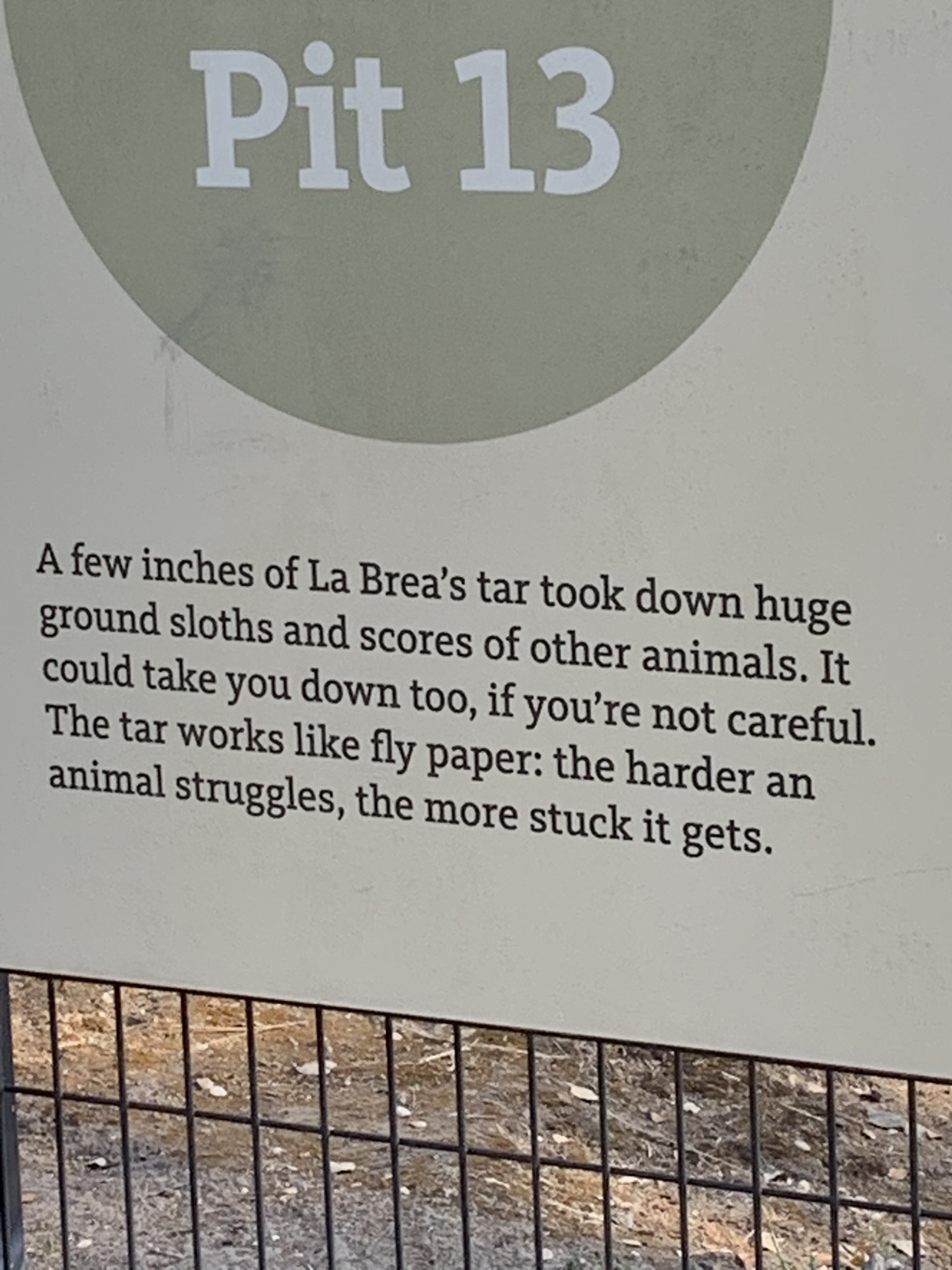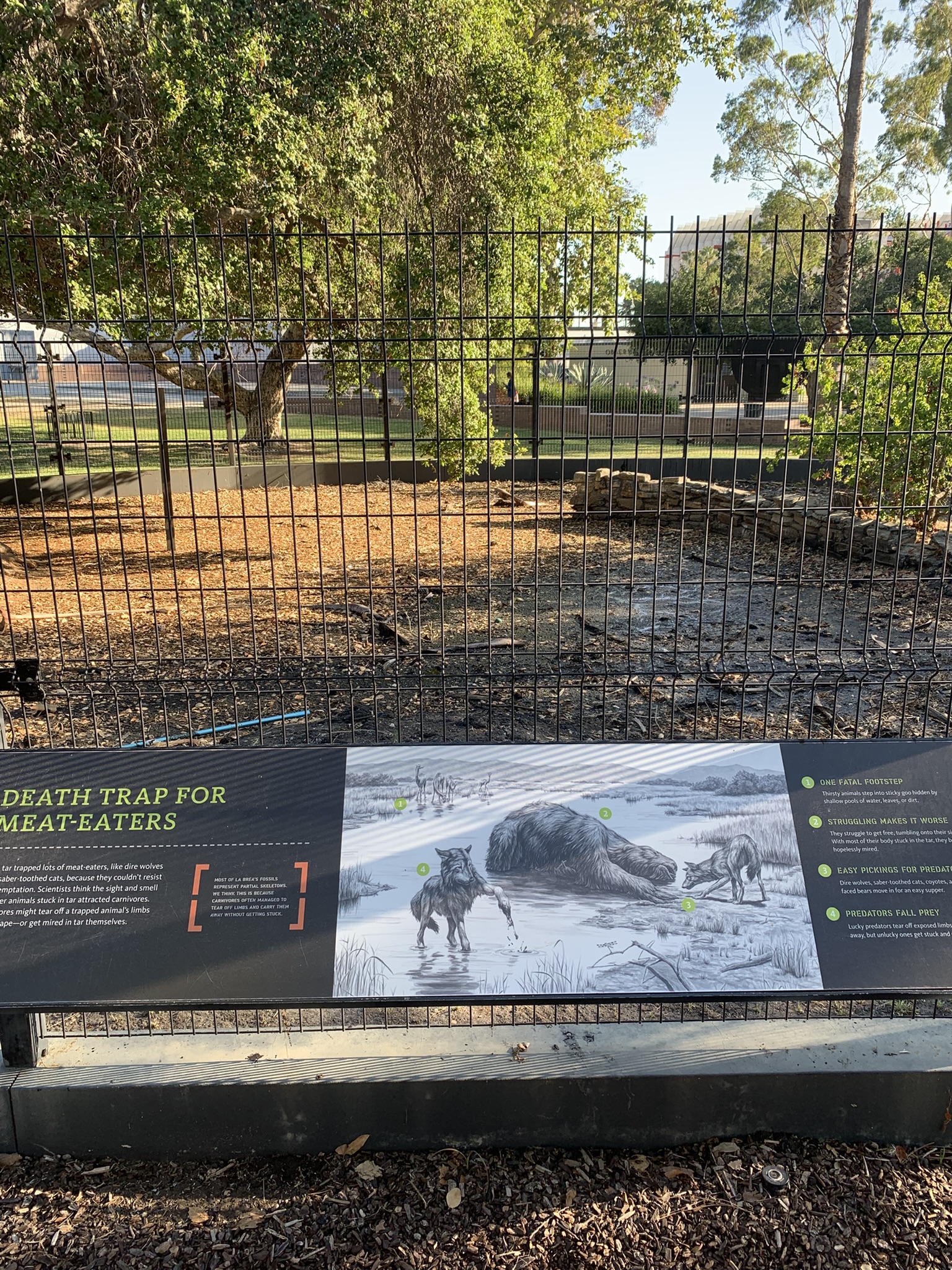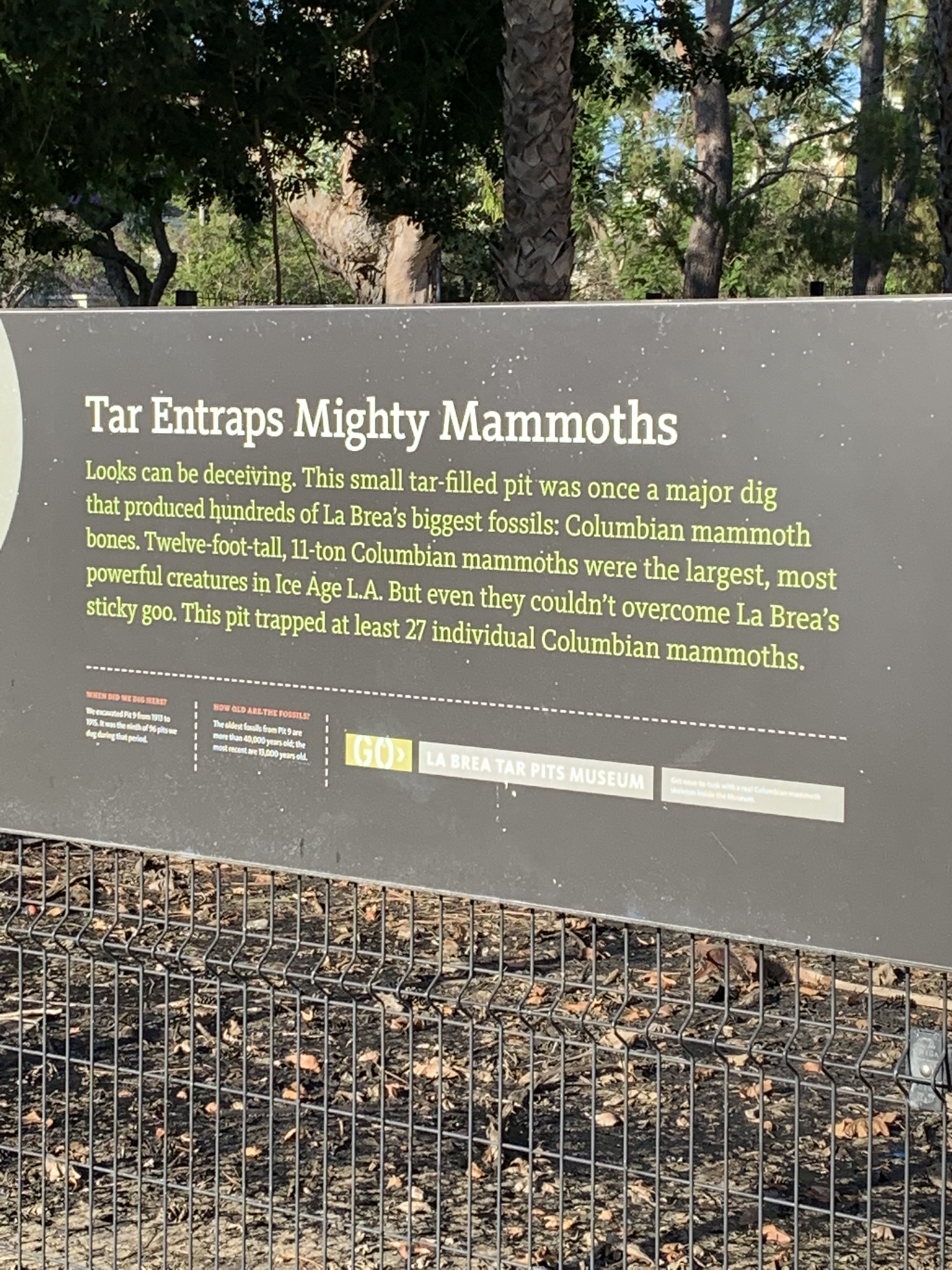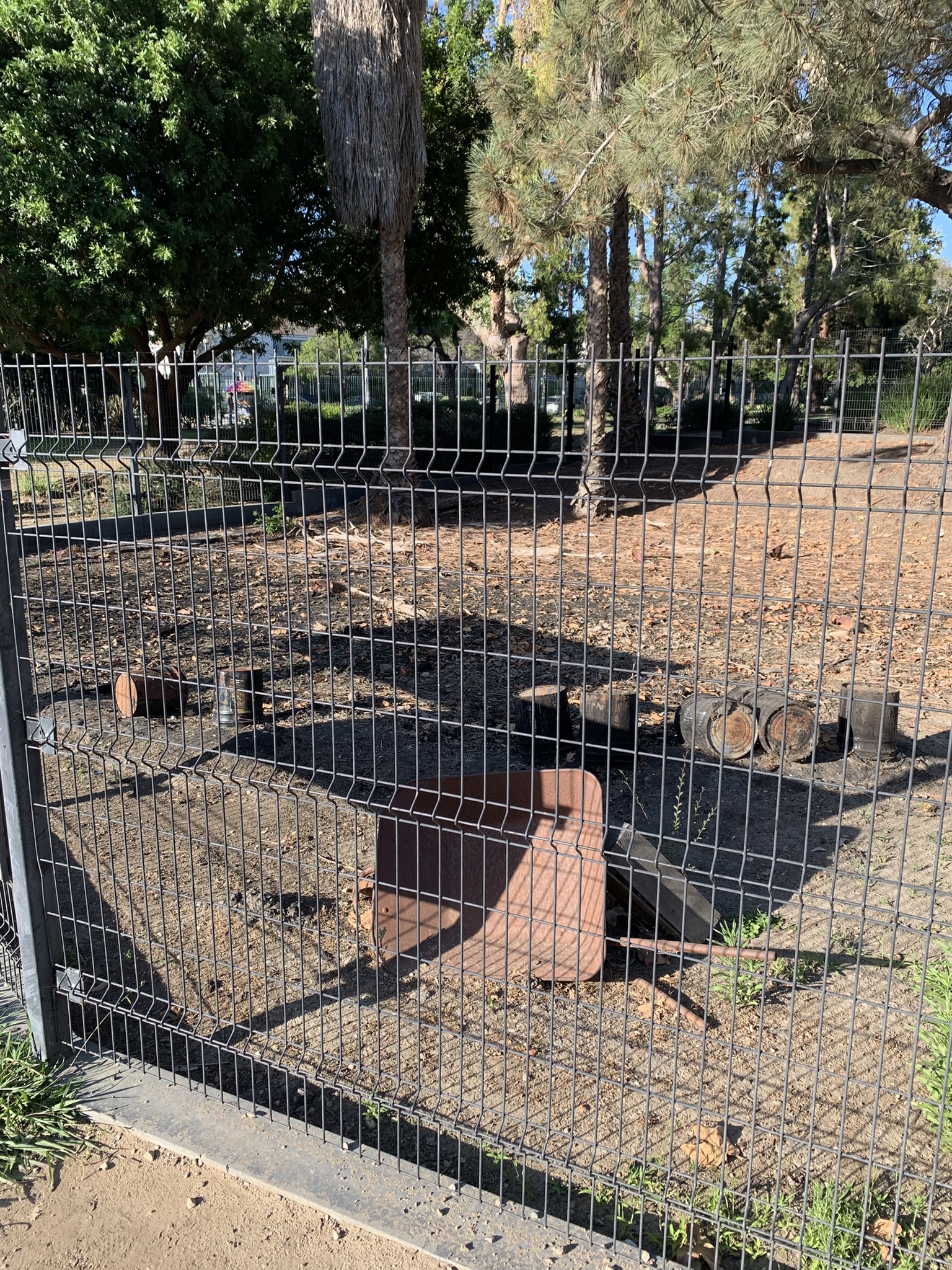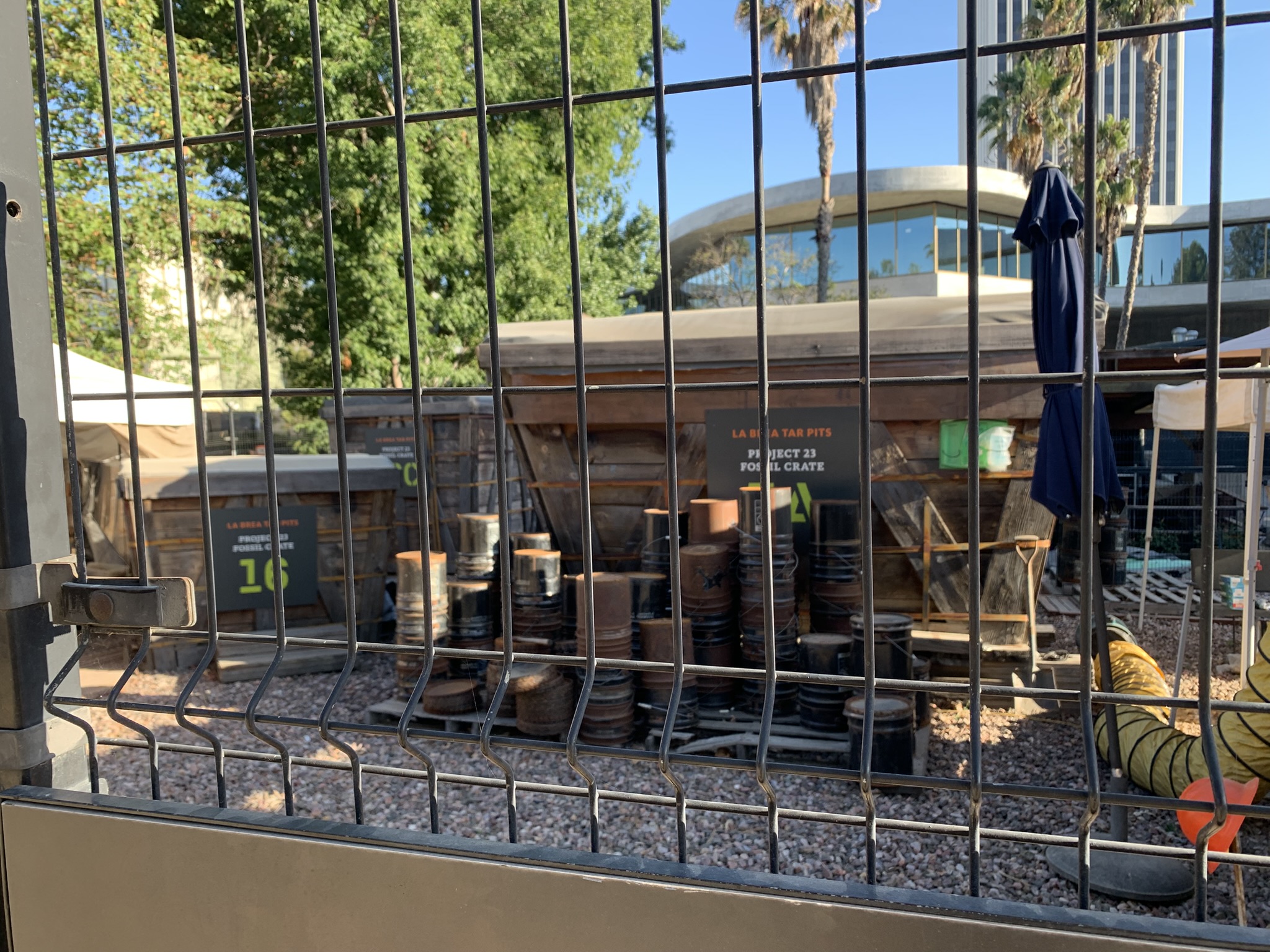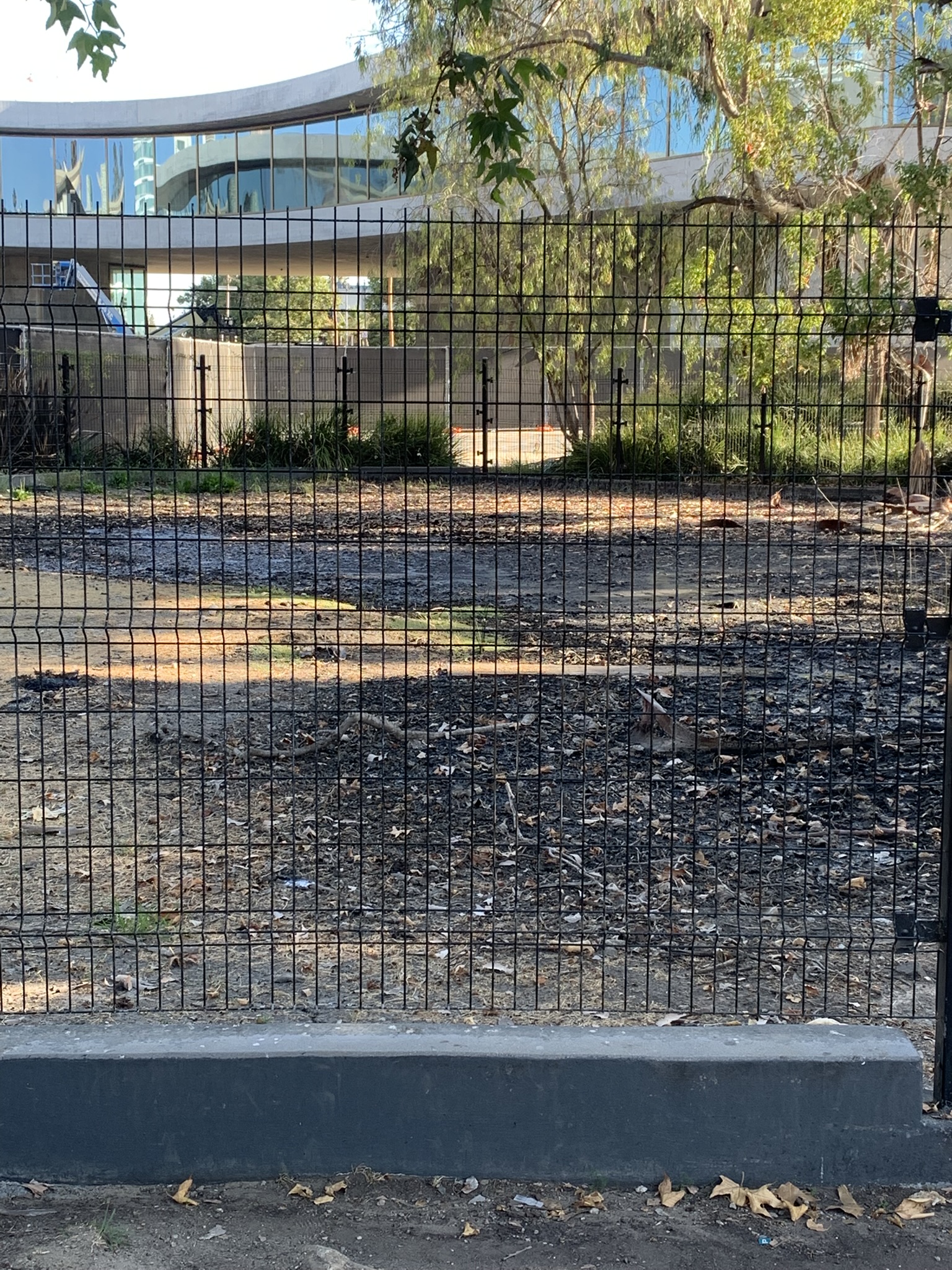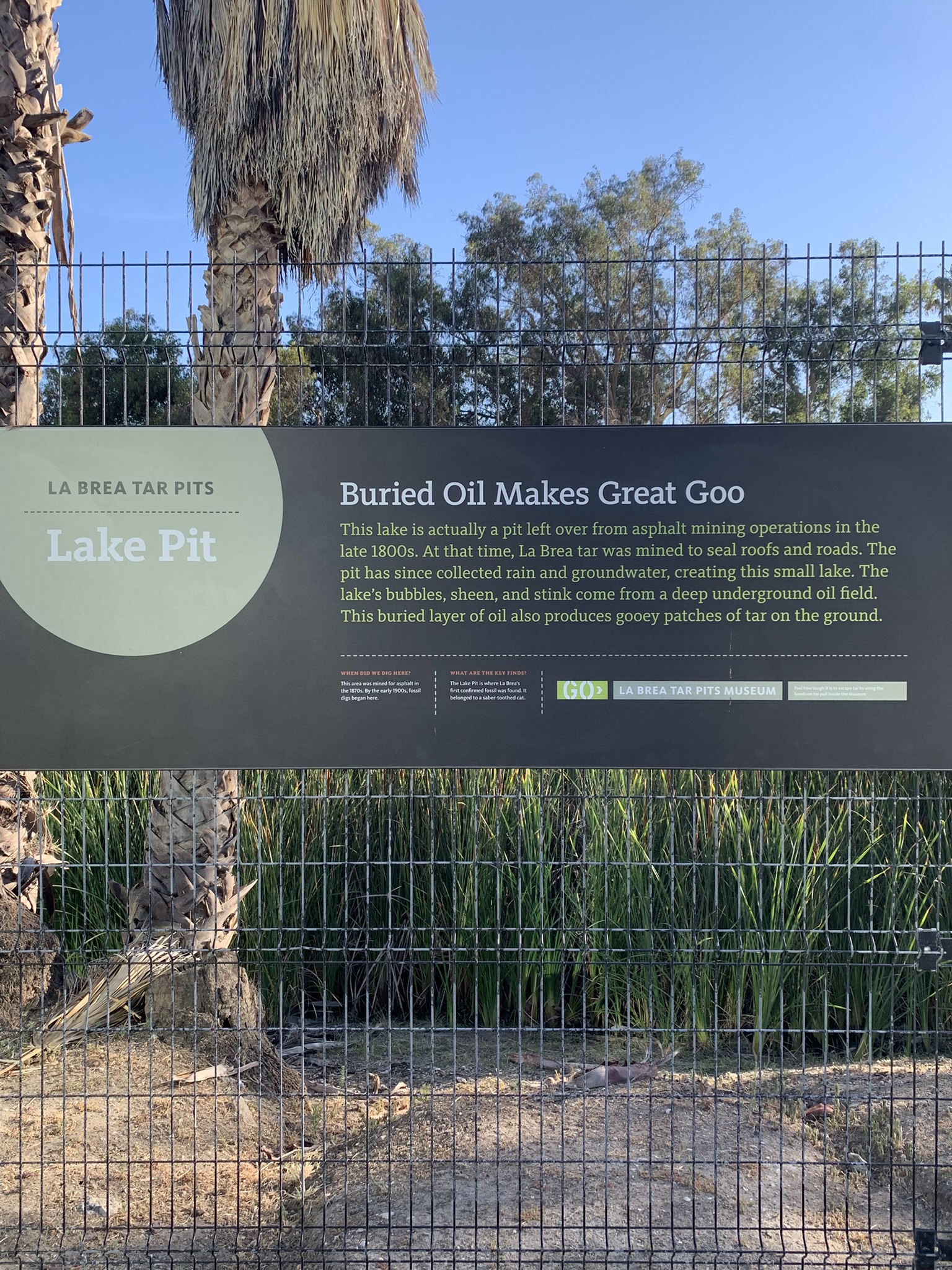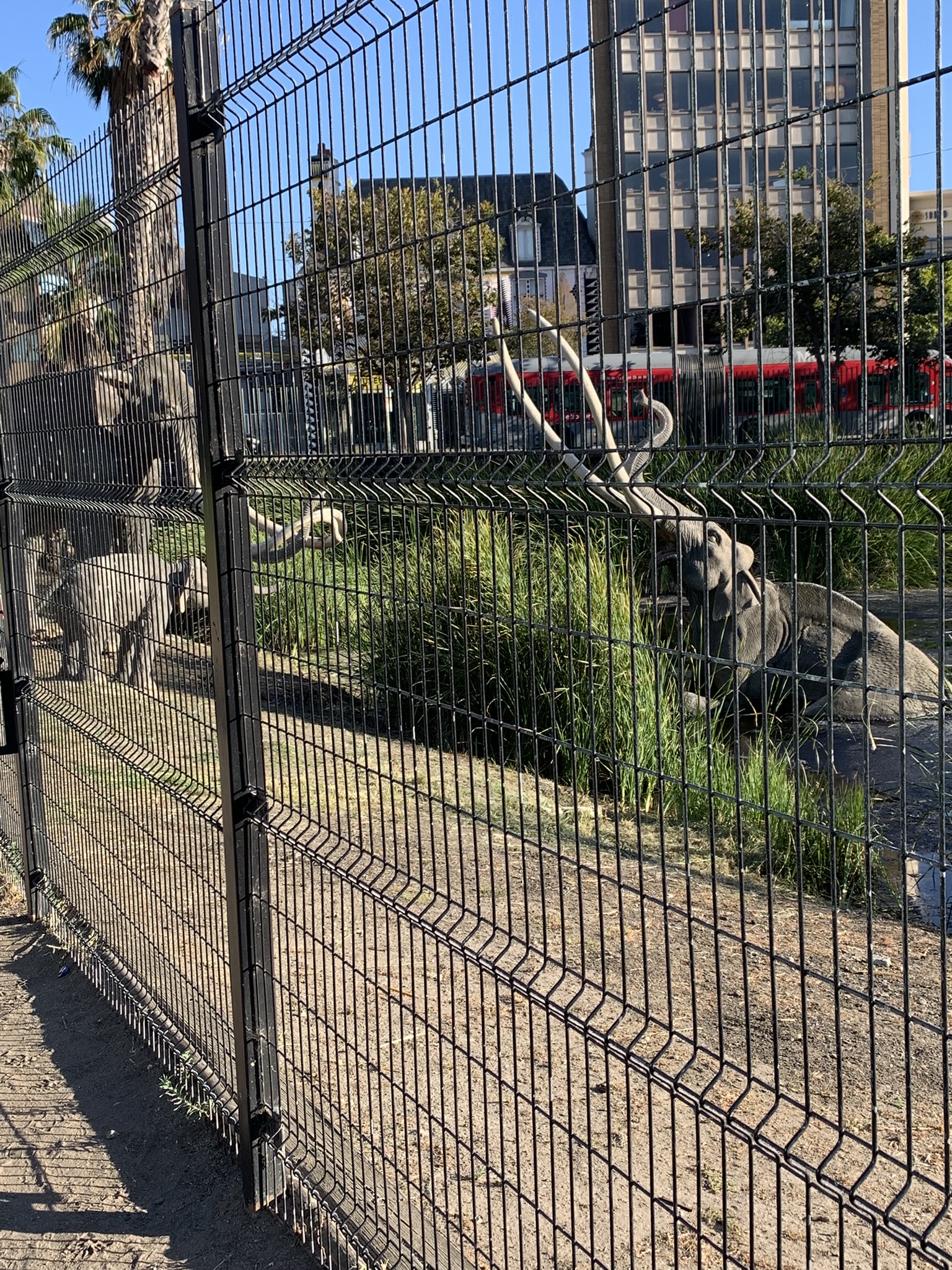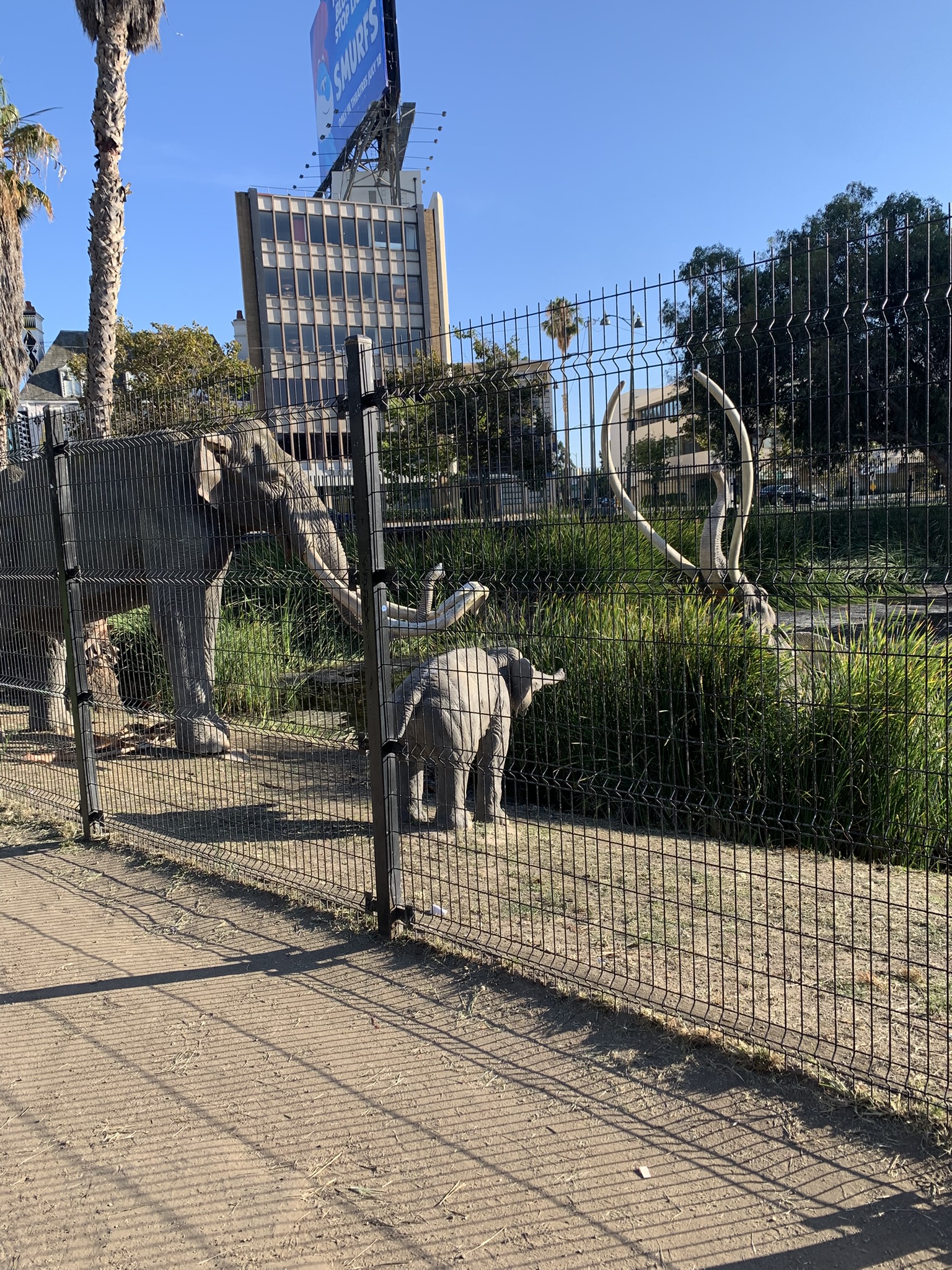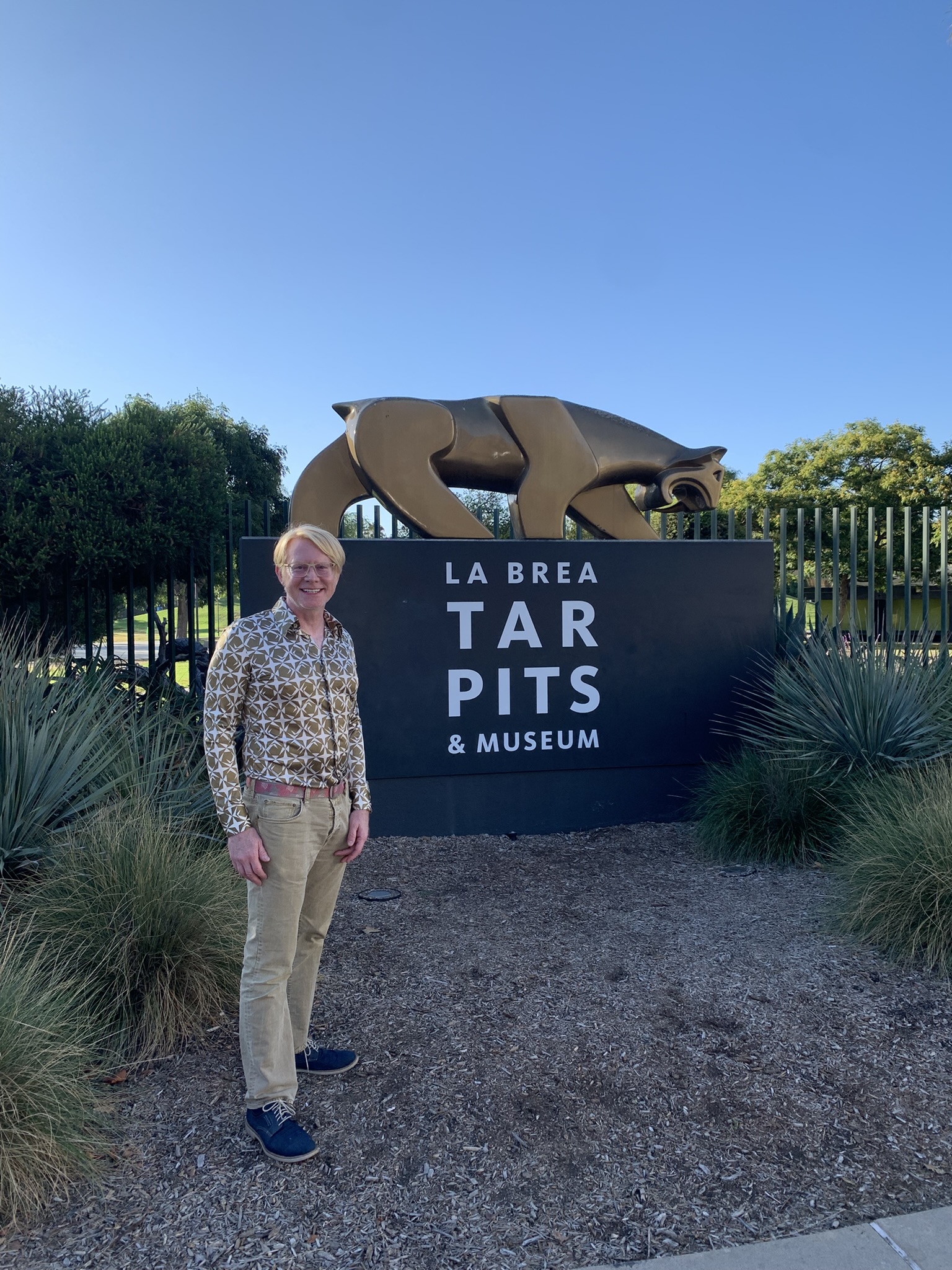American Geode were just in Los Angeles, California and of course we had to visit the special Paleontology hot spot in Los Angeles, the La Brea Tar Pits! We’re talking about a truly unique spot, right in the heart of a massive city, where the past literally oozes up from the ground. For thousands upon thousands of years, this place has been a natural, albeit deadly, trap, preserving an incredible record of ancient life.
So, what’s the deal with this “tar”? Well, it’s not actually tar, but thick, sticky asphalt. Imagine crude oil, deep beneath the Earth’s surface, slowly, patiently making its way up through cracks and fissures in the ground. When it finally breaks through to the surface, the lighter, more volatile parts of the oil evaporate away, leaving behind this incredibly viscous, dark asphalt. It’s like a super-slow, natural oil spill that’s been happening for eons.
Now, picture the scene during the last Ice Age. Los Angeles wasn’t the concrete jungle it is today; it was a lush landscape with watering holes. Animals, from massive mammoths and mastodons to fierce saber-toothed cats and packs of dire wolves, would roam these lands. They’d be drawn to the pools of water that often collected on top of the asphalt, or maybe they’d just be unlucky enough to step into a hidden patch of the sticky stuff. Once an animal got stuck, it was a slow, agonizing process. And here’s the really wild part: predators, seeing an easy, struggling meal, would rush in to capitalize, only to find themselves ensnared in the same gooey trap. This cycle repeated for millennia, leading to an astonishing accumulation of bones.
These bones, perfectly preserved by the asphalt, are like nature’s ultimate time capsule. Scientists have unearthed millions of fossils, not just of the big, famous Ice Age beasts, but also tiny rodents, birds, insects, and even plant remains. Each discovery adds another piece to the puzzle, painting a vivid picture of what the ecosystem of Los Angeles was like tens of thousands of years ago. It’s an unparalleled window into prehistoric North America.
But how did this incredible natural phenomenon become a public park? For a long time, the tar pits were just… there. People knew about them, and some even used the asphalt for roofing or other purposes. It wasn’t until the early 20th century that serious scientific excavations began. George Allan Hancock, whose family owned the Rancho La Brea land where the pits are located, was instrumental in protecting this unique site. Recognizing its immense scientific value, he generously donated 23 acres of the land, including the most fossil-rich areas, to Los Angeles County in 1913. His only condition was that the county preserve the pits and allow for continued scientific research and public display of the fossils.
This donation paved the way for the creation of Hancock Park, which officially opened in the 1920s. The George C. Page Museum, dedicated to the La Brea Tar Pits, was later built within the park and opened its doors in 1977. Today, it’s not just a research site but a fantastic museum and a beautiful urban park where you can see active excavations, learn about the Ice Age, and even watch bubbling tar pits firsthand. It’s truly a living, breathing piece of history right in the middle of modern L.A. Enjoy our photos and contact us with any questions about what else to do in Los Angeles!
